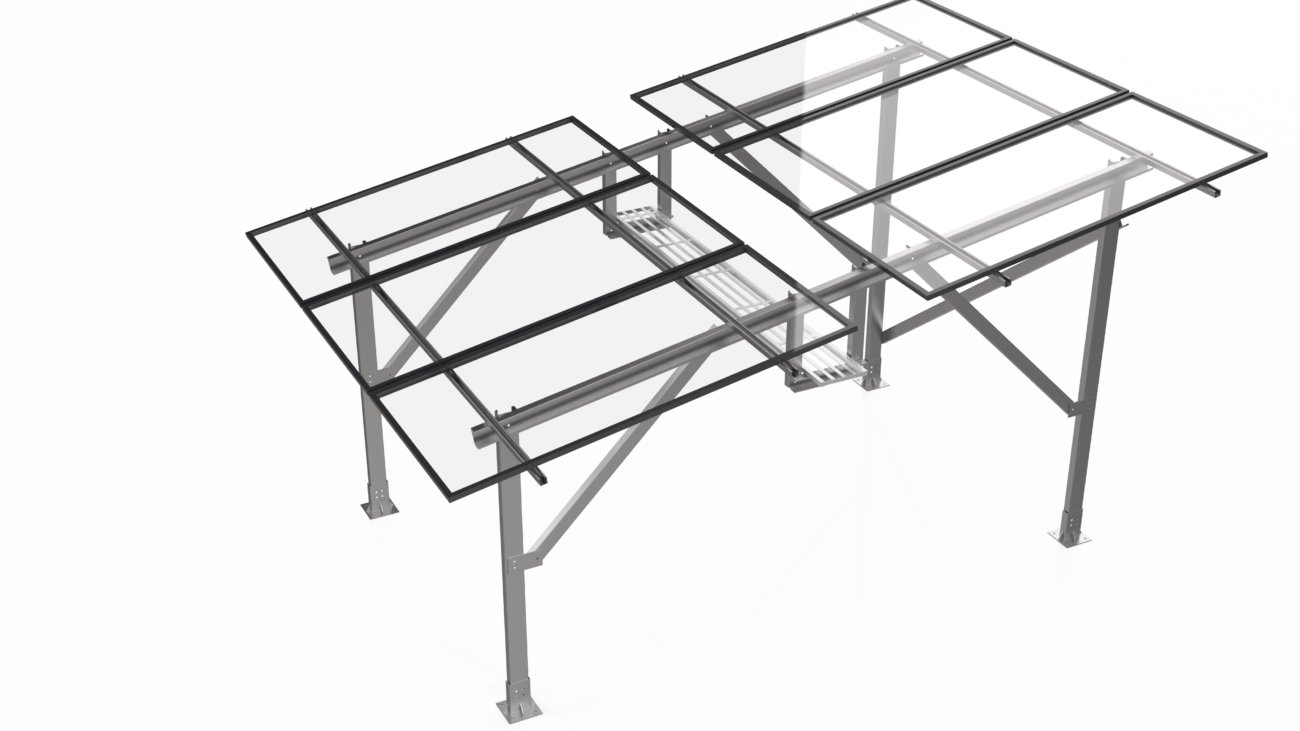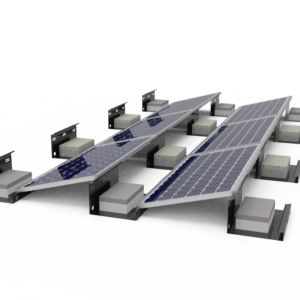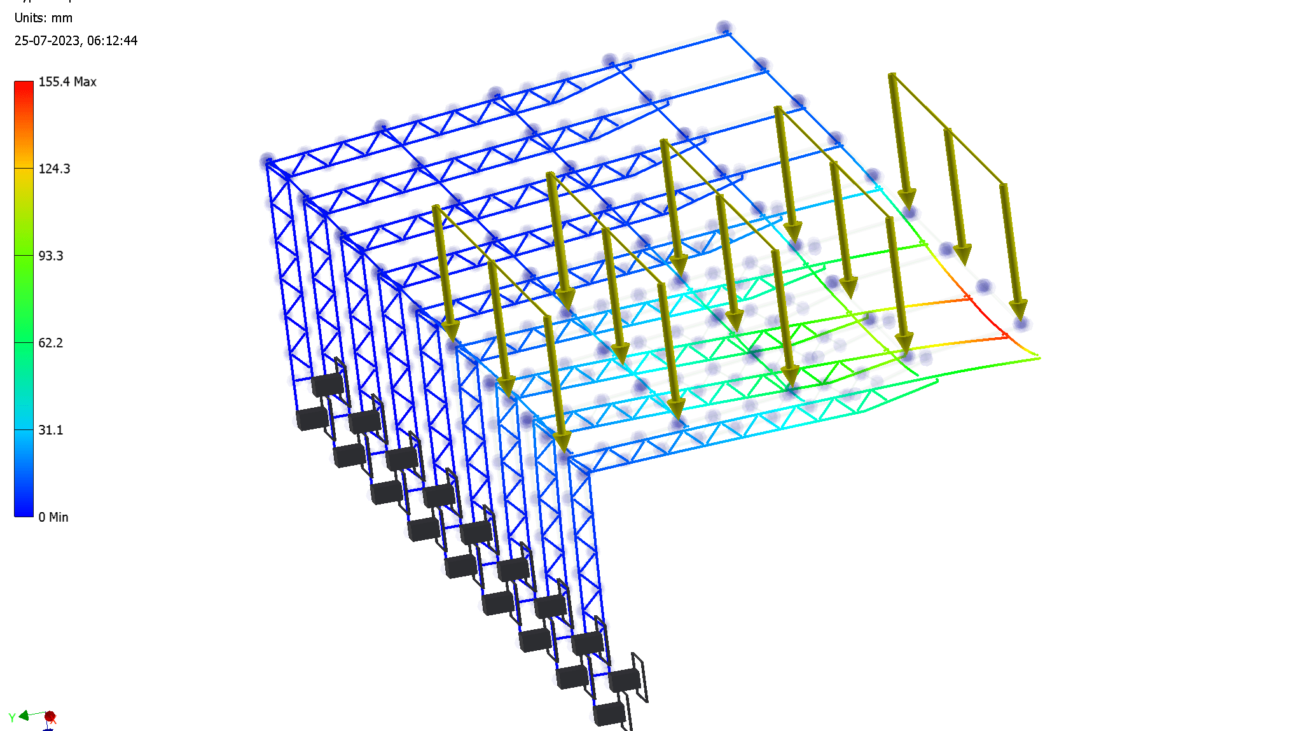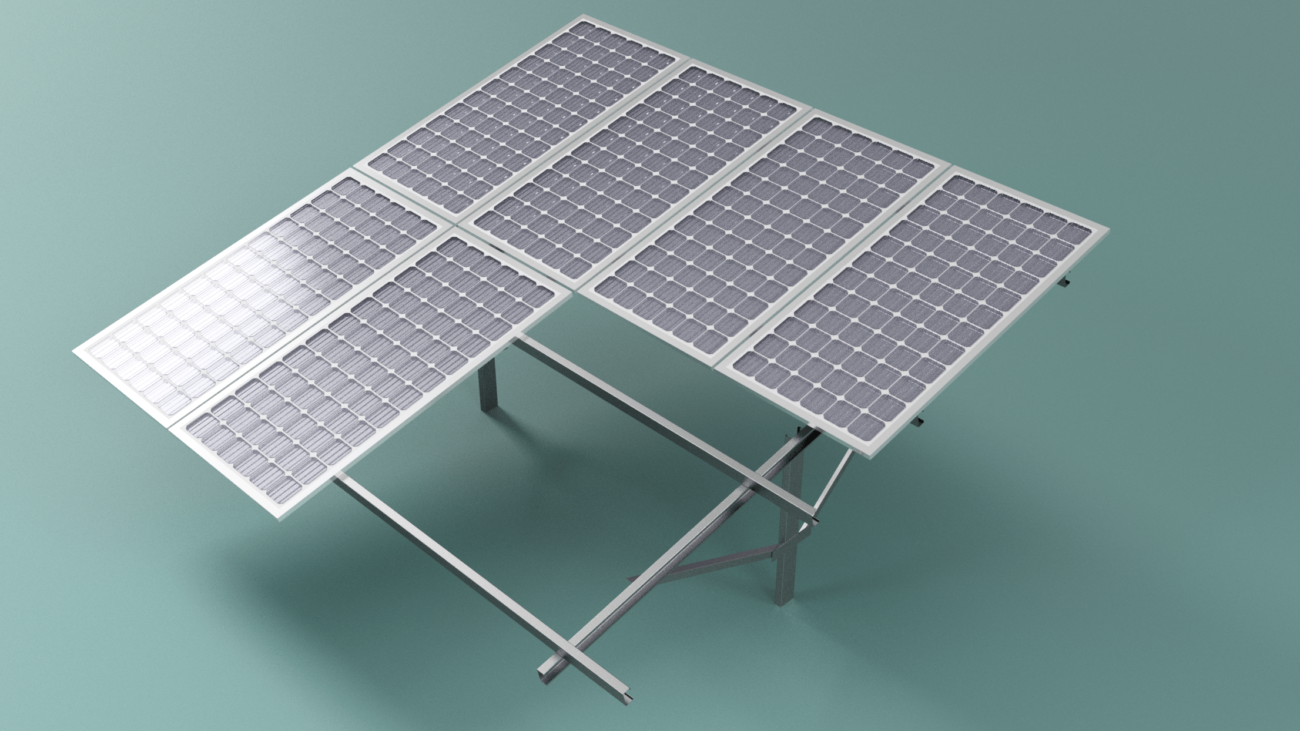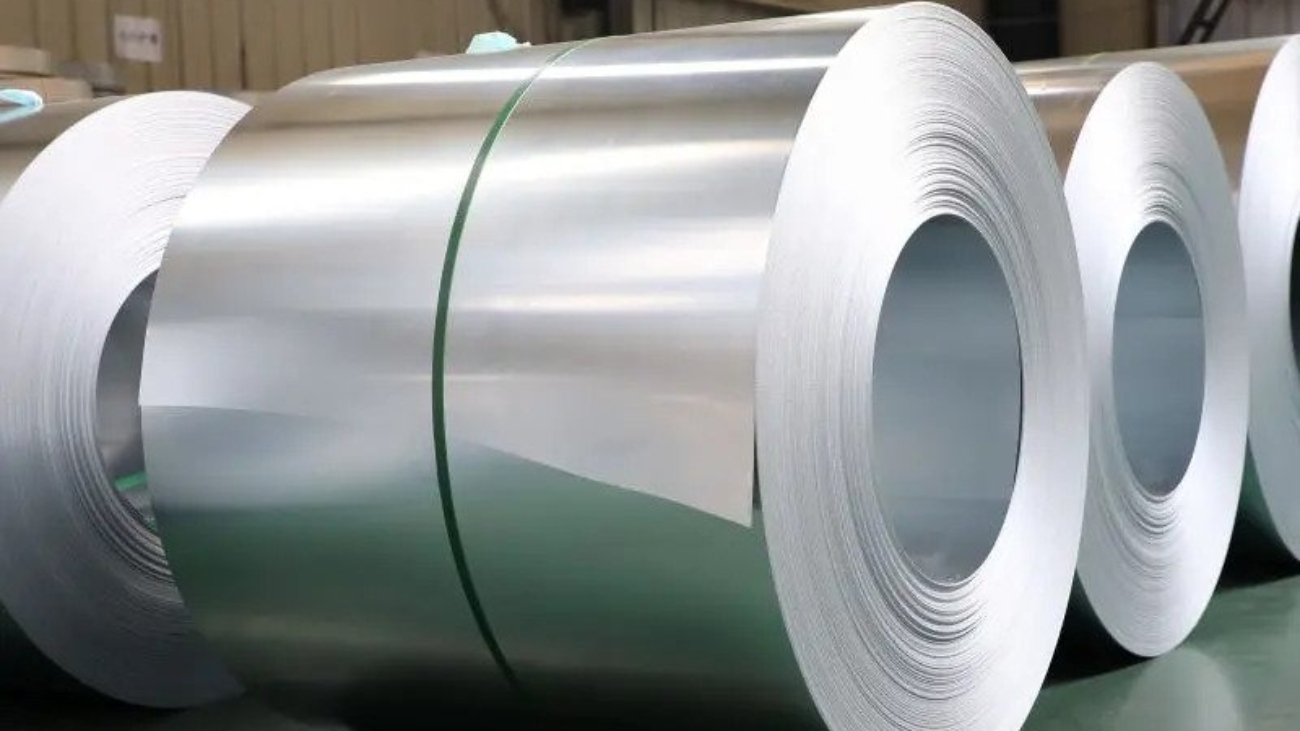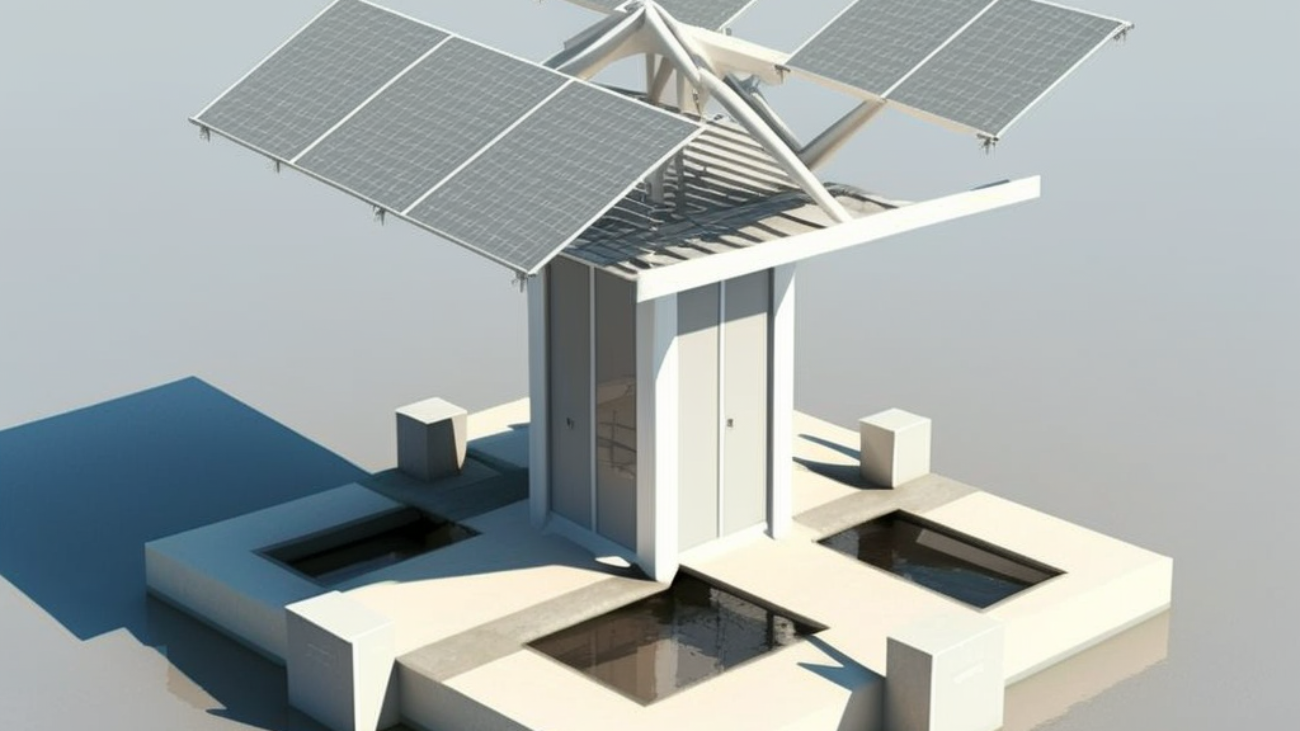Learn everything about pre-fab RCC rooftop solar structures for Indian homes and EPC projects. Understand benefits, myths, coatings, engineering guidance and how prefab compares with traditional fabrication.
Advantages of Steel Structures in Solar Mounting by Structura Metal in Aurangabad
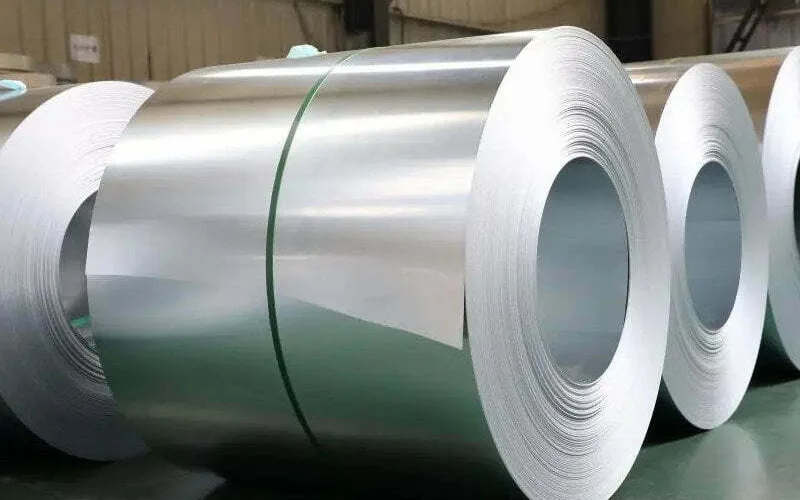
Introduction:
In the quest for sustainable energy solutions, solar power has emerged as a frontrunner. An often underestimated aspect of solar installations is the choice of mounting structures. Structura Metal, a pioneering company based in Aurangabad, recognizes the immense potential of steel structures in solar mounting. This article uncovers the advantages of employing steel structures for solar mounting and how they significantly contribute to stability and durability.
Benefits of Steel Structures in Solar Mounting:
1. Enhanced Stability:
Steel structures bring an unmatched level of stability to solar mounting. Their robustness and load-bearing capacity ensure that solar panels remain securely in place even in challenging weather conditions, reducing the risk of damage and enhancing long-term performance.
2. Durability Beyond Compare:
When it comes to longevity, steel reigns supreme. Its resilience against environmental factors such as corrosion, UV radiation, and temperature variations ensures that your solar installation maintains its structural integrity over time.
3. Customizable Design Options:
Steel’s flexibility allows for intricate and tailored designs. Whether you require ground-mounted solar systems or integrated rooftop installations, steel solar racking systems can be customized to fit the unique specifications of your project.
4. Corrosion Resistance:
Structura Metal employs advanced corrosion-resistant coatings on its steel structures. This protection safeguards against rust and deterioration, extending the lifespan of the mounting system and ensuring consistent performance.
5. Sustainability in Action:
Choosing steel structures aligns with sustainability goals. Steel is recyclable, reducing the environmental impact of your solar project. Its durability also means fewer replacements, contributing to a greener energy solution in the long run.
6. Versatility in Applications:
From ground-mounted solar systems to rooftop installations, steel’s versatility accommodates various applications. Whether you’re considering commercial, industrial, or residential projects, steel solar mounts offer adaptability.
Steel vs. Aluminum Solar Mounts:
Steel structures offer numerous advantages over aluminum counterparts:
Strength and Load-Bearing Capacity: Steel’s exceptional strength ensures stability in high-stress conditions, outperforming aluminum in load-bearing capacity.
Longevity: The durability of steel makes it a cost-effective choice in the long run due to reduced maintenance and replacements.
Corrosion Resistance: Properly coated steel is more resilient against corrosion compared to aluminum.
Customization: Steel’s malleability allows for intricate designs that cater to specific project requirements.
Environmental Impact: Recyclable steel is a sustainable choice compared to aluminum.
Conclusion:
Structura Metal’s emphasis on steel structures for solar mounting presents an array of advantages. The enhanced stability, durability, and customization options that steel brings to solar panel installations are truly remarkable. As global energy demands evolve and sustainability takes center stage, opting for steel mounting solutions proves to be a smart choice. With its corrosion resistance, load-bearing capacity, and versatile applications, steel structures from Structura Metal pave the way for a stable and enduring solar future.
Structural Analysis for Solar Mounting Structures: Ensuring Safety and Stability
Solar mounting structures are the foundation of any solar power plant, and as such, their design, manufacturing, and installation must be done with the utmost care and attention to detail. One of the most critical elements of solar mounting structure design is structural analysis. This process involves analyzing the proposed structure to ensure that it can withstand the loads and forces it will be subjected to throughout its lifetime. In this blog, we will explore the importance of structural analysis for solar mounting structures and how it helps ensure safety and stability.
Why is structural analysis important for solar mounting structures?
Solar mounting structures are exposed to a variety of loads and forces, including wind, snow, and seismic activity. These loads and forces can cause the structure to deform, crack, or even collapse if the structure is not designed and manufactured to withstand them. Structural analysis is a critical step in the design process that helps to ensure that the proposed structure will be able to withstand these loads and forces without failure.
What are the different types of structural analysis?
There are several different types of structural analysis that can be used to evaluate solar mounting structures, including linear and nonlinear analysis, static and dynamic analysis, and linear and nonlinear buckling analysis.
Linear and nonlinear analysis: Linear analysis assumes that the structure’s behavior is linear and predictable, while nonlinear analysis takes into account the nonlinear behavior of the structure, such as buckling and plastic behavior.
Static and dynamic analysis: Static analysis assumes that the structure is in a state of equilibrium, while dynamic analysis takes into account the effect of time-varying loads and forces.
Linear and nonlinear buckling analysis: Linear buckling analysis assumes that the structure will buckle in a predictable and linear manner, while nonlinear buckling analysis takes into account the nonlinear behavior of the structure during buckling.
Which type of structural analysis is best for solar mounting structures?
The type of structural analysis that is best for a solar mounting structure will depend on the specific loads and forces that the structure will be subjected to. For example, if the structure will be exposed to high winds, dynamic analysis may be required. Similarly, if the structure will be located in an area prone to earthquakes, a seismic analysis may be necessary. It is important to consult with a structural engineer to determine the appropriate type of structural analysis for your solar mounting structure.
How is structural analysis conducted?
Structural analysis is typically conducted using computer-aided design (CAD) software. The designer will input the loads and forces that the structure will be subjected to into the software, and the software will then calculate the behavior of the structure under these loads and forces. The software will also generate detailed reports and drawings that the designer can use to evaluate the strength and stability of the structure.
In Conclusion,
Structural analysis is a critical step in the design and manufacturing of solar mounting structures. It helps to ensure that the structure will be able to withstand the loads and forces it will be subjected to throughout its lifetime, and that it will be safe and stable for the life of the solar power plant. By working with a structural engineer, solar power plant designers and manufacturers can ensure that their structures are designed and manufactured to the highest standards of safety and stability.
Introduction to Solar Mounting Structures
Solar Mounting Structures, also known as solar racking systems, are an essential component of any solar energy system. They provide the support and stability necessary for solar panels to function effectively and efficiently. In this report, we will provide an introduction to the basics of solar mounting structures, including the different types of systems available, the materials used to construct them, and the key considerations when designing and installing a solar mounting structure.
Types of Solar Mounting Structures
There are several different types of solar mounting structures available, each with their own unique features and benefits. The most common types include:
- Ground-Mounted Systems: These systems are installed directly on the ground and are typically used for large-scale solar projects, such as utility-scale solar farms. Ground-mounted systems are highly customizable and can be designed to meet specific site requirements.
- Roof-Mounted Systems: These systems are installed directly on the roof of a building and are commonly used for residential and commercial solar projects. Roof-mounted systems are available in a variety of styles, including flush-mounted, ballasted, and penetrating systems.
- Floating-Mount Systems: As their name suggests, these mounts are designed to float on water, making them ideal for installations on lakes and other bodies of water. Floating mounts are typically constructed of plastic or polymer, and they are designed to securely hold the solar array in place while also allowing for a certain amount of flexibility.
Materials Used in Solar Mounting Structures
The materials used to construct solar mounting structures are typically aluminum, steel, or a combination of both. Aluminum is a popular choice due to its lightweight, corrosion-resistant properties. Steel is also commonly used, particularly for ground-mounted systems, due to its strength and durability. Both materials can be coated with a variety of finishes to protect against weathering and corrosion.
Key Considerations When Designing and Installing a Solar Mounting Structure
When designing and installing a solar mounting structure, there are several key considerations that must be taken into account. These include:
- Site conditions: The solar mounting structure must be designed to withstand the specific site conditions, such as wind, snow, and seismic activity.
- Load capacity: The solar mounting structure must be able to support the weight of the solar panels and any additional equipment, such as inverters and batteries.
- Orientation and tilt: The solar mounting structure must be oriented and tilted to optimize solar panel performance and maximize energy production.
- Accessibility: The solar mounting structure must be designed to allow for easy access for maintenance and repairs.
In conclusion, solar mounting structures are an essential component of any solar energy system, providing the support and stability necessary for solar panels to function effectively and efficiently. Understanding the different types of systems available, the materials used to construct them, and the key considerations when designing and installing a solar mounting structure is important for ensuring the success of any solar project.
Types of coating used on solar mounting structures
Solar energy is a rapidly growing industry, and the durability and longevity of solar mounting structures are crucial for the efficient functioning of solar power systems. One of the key factors that determine the longevity of solar mounting structures is the type of coating used on them. In this blog post, we will discuss the different types of coatings used on solar mounting structures, their unique properties and the industry standard grading in use.
Anodized coating: Anodizing is an electrochemical process that creates a protective oxide layer on the surface of aluminium. This coating is highly durable, resistant to weathering, and provides excellent insulation. Anodized coatings are often used on aluminium solar mounting structures. AA10 is the common industry standard of anodized coating which is 10 microns thick.
Powder coating: This type of coating is applied as a dry powder and then cured under heat. It is an environmentally friendly process and provides a durable, long-lasting finish. Powder coating is often used for steel and aluminium solar mounting structures.
Galvanized coating: This type of coating is used to protect steel from corrosion. Galvanized coatings are available in two forms: electro-galvanized and hot-dip galvanized. Electro-galvanized coating is applied by electroplating zinc onto the steel, while hot-dip galvanized coating is applied by immersing the steel in a bath of molten zinc. Both types of galvanized coatings provide excellent corrosion resistance. Hot rolled sheets with Hot Dip Galvanizing coat ranging from 80 microns to special coating of 120 microns is the industry standard for hot-dip galvanized coating.
Galvalume coating: This type of coating is a type of alloy coating that is composed of a mixture of aluminium, zinc, and silicon. Galvalume coating is highly corrosion-resistant and provides excellent protection for steel solar mounting structures. 150 AZ coating is the industry standard for Galvalume coating.
PosMAC coating: POSMAC coating is a corrosion-resistant product that is 5 to 10 times stronger resistance than that of a normal hot-dip galvanized steel sheet [GI, GI(H)]with the same coating weight. PosMAC has an excellent cross-section corrosion resistance; normal thick plating products can be replaced with this product. The same processing, assembly, and painting process can be applied to PosMAC as one would apply to GI. GP Sheets with coating upto 550 GSM is the industry standard for PosMAC coating.
In conclusion, the type of coating used on solar mounting structures plays a crucial role in determining the longevity and durability of the structures. The use of anodized, powder, galvanized, Galvalume and PosMAC coatings provides excellent protection against corrosion and weathering, ensuring the efficient functioning of solar power systems. It’s important to choose the right coating based on the specific needs and requirements of the project.
Types of solar mounting structures
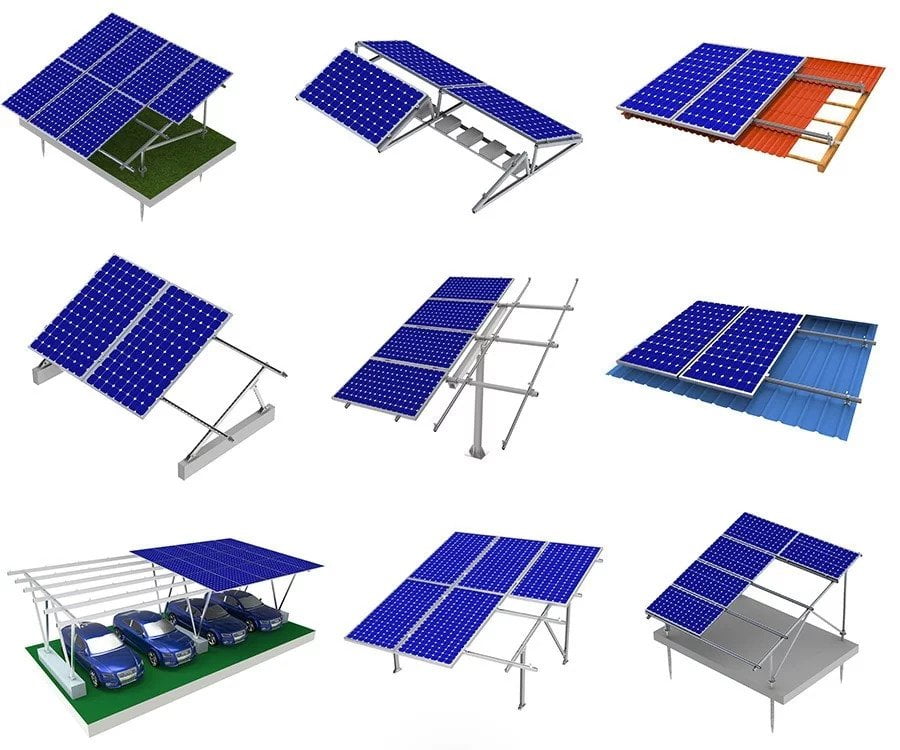
Solar energy is becoming increasingly popular in India, as the country accelerates its efforts to become a leader in clean energy and reduce its carbon footprint. Solar mounting structures are an essential component of any solar energy project, as they support the solar panels and allow them to capture enough sunlight. There are several different types of solar mounting structures to choose from, each with its own unique features and benefits.
Rooftop Mounts: Rooftop mounts are the most common type of solar mounting structure in India, and are typically used for residential and commercial projects. They are available in both railed and rail-less systems, and are generally attached to the roof with bolts or screws. Railed systems have rails that support the solar panels, while rail-less systems attach the panels directly to hardware connected to the bolts/screws. Rooftop mounts are available in sloped and flat roof versions, and can be used to maximize the amount of sunlight captured.
Ground Mounts: Ground mounts are another common type of solar mounting structure in India, and are typically used for larger-scale projects. These mounts are usually constructed of either aluminum or stainless steel, and they are designed to securely hold the solar array in place. Ground mounts can be stationary or adjustable, and they can also be combined with tracking systems to increase the efficiency of the solar array. Ground mounts can further be classified into the following types:
- Foundation Mount
- Ballasted Footing Mount
- Pole Mount
- Multi Pole Mount (Carports, Sheds)
- Smart Flowers
Floating Mounts: Floating mounts are a relatively new type of solar mounting structure, and they are becoming increasingly popular in India. As their name suggests, these mounts are designed to float on water, making them ideal for installations on lakes and other bodies of water. Floating mounts are typically constructed of plastic or polymer, and they are designed to securely hold the solar array in place while also allowing for a certain amount of flexibility.
In summary, there are various types of solar mounting structures available in the Indian market, each with its own advantages and disadvantages. Ground-mounted structures are best for large-scale projects, roof-mounted structures are more suitable for small-scale projects, and floating structures offer an innovative solution for water bodies. It’s important to consider factors specific to your needs when choosing a solar mounting structure for a project.

